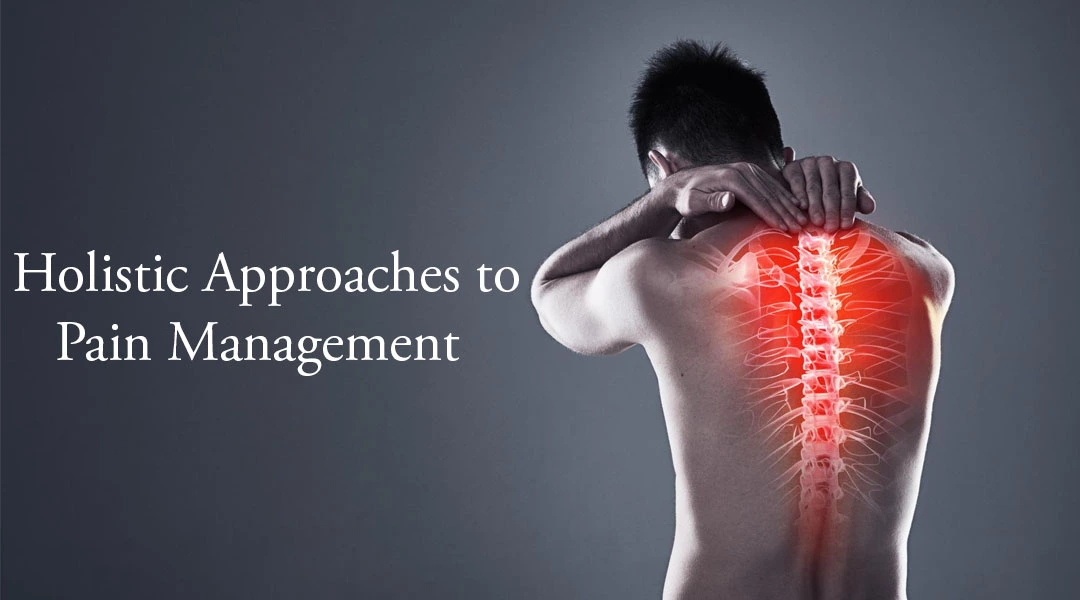Holistic approaches to pain management focus on treating the individual as a whole, addressing not only the physical aspects of pain but also the emotional, social, and spiritual dimensions, believes Yash Birla. These approaches recognize that pain is a complex phenomenon influenced by various factors, and effective management often requires a multifaceted approach. Here, we’ll explore some key components of holistic approaches to pain management.
Mind-Body Techniques: Incorporating mind-body techniques such as meditation, mindfulness, and deep breathing can help individuals manage pain by promoting relaxation, reducing stress, and enhancing overall well-being. These techniques can alter the perception of pain and improve coping mechanisms. Mindfulness-based stress reduction (MBSR) programs, for example, have been shown to be effective in chronic pain management by fostering acceptance and resilience.
Physical Therapy and Exercise: Physical therapy plays a crucial role in holistic pain management by addressing musculoskeletal issues, improving mobility, and enhancing strength and flexibility. Exercise releases endorphins, natural painkillers produced by the body, which can help alleviate pain and improve mood. Tailored exercise programs, including aerobic, strength training, and flexibility exercises, can be designed to suit individual needs and abilities.
Nutrition and Diet: A healthy diet rich in nutrients is essential for overall health and can also influence pain perception. Certain foods have anti-inflammatory properties and can help reduce pain associated with conditions such as arthritis. Incorporating a variety of fruits, vegetables, whole grains, and lean proteins while minimizing processed foods and sugars can support optimal health and contribute to pain management, suggests Yash Birla.
Acupuncture and Acupressure: Traditional Chinese medicine practices like acupuncture and acupressure involve stimulating specific points on the body to promote healing and alleviate pain. These techniques are believed to balance the flow of energy, or qi, within the body. Studies have shown that acupuncture can be effective in managing various types of pain, including chronic back pain, osteoarthritis, and migraines.
Herbal Remedies and Supplements: Herbal remedies and dietary supplements are often used in holistic pain management to complement conventional treatments. Substances such as turmeric, ginger, and capsaicin have anti-inflammatory properties and may help reduce pain and inflammation. However, it’s essential to consult with a healthcare provider before incorporating any supplements into your regimen, as they can interact with medications and may not be suitable for everyone.
Massage Therapy: Massage therapy can provide relief from muscle tension, improve circulation, and promote relaxation, all of which can help alleviate pain. Various techniques, including Swedish massage, deep tissue massage, and myofascial release, can target specific areas of discomfort and contribute to overall well-being. Massage therapy is often used in conjunction with other holistic approaches to enhance their effectiveness.
Cognitive-Behavioural Therapy (CBT): CBT is a psychological therapy that focuses on changing negative thought patterns and behaviours associated with pain. By identifying and challenging unhelpful beliefs about pain, individuals can develop more adaptive coping strategies and reduce their perception of pain intensity. CBT can also help address underlying issues such as anxiety and depression, which commonly coexist with chronic pain conditions.
Sleep Hygiene: Quality sleep is essential for pain management and overall health. Poor sleep can exacerbate pain sensitivity and impair coping mechanisms. Establishing good sleep hygiene practices, such as maintaining a consistent sleep schedule, creating a relaxing bedtime routine, and optimizing the sleep environment, can improve sleep quality and contribute to better pain management outcomes.
Social Support and Community Engagement: Chronic pain can be isolating, and having a strong support network is vital for emotional well-being and coping with pain. Engaging with supportive friends, family members, or support groups can provide encouragement, understanding, and practical assistance. Sharing experiences with others who are facing similar challenges can reduce feelings of loneliness and helplessness.
Spiritual Practices: For some individuals, spiritual beliefs and practices can provide comfort, meaning, and strength in coping with pain. Engaging in prayer, meditation, or other spiritual rituals can foster a sense of connection, hope, and transcendence beyond physical suffering. Integrating spiritual dimensions into pain management can address existential concerns and promote holistic healing.
In conclusion, holistic approaches to pain management recognize the interconnectedness of the mind, body, and spirit and aim to address pain comprehensively. By incorporating various strategies such as mind-body techniques, physical therapy, nutrition, complementary therapies, and psychosocial support, individuals can enhance their ability to manage pain effectively and improve their overall quality of life. It’s essential to work with a healthcare team to develop a personalized treatment plan that considers individual needs, preferences, and goals.








Leave A Comment